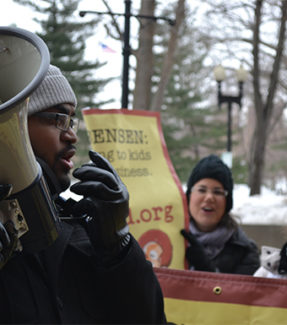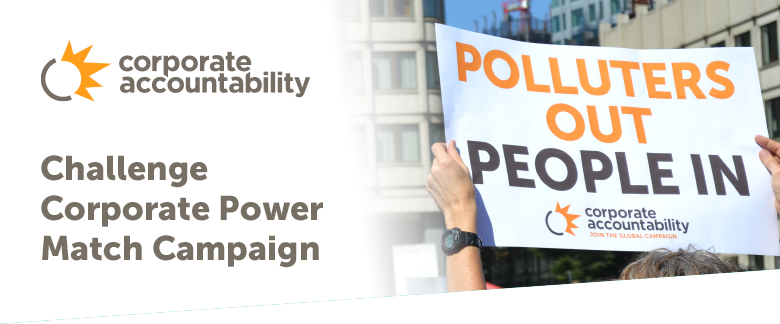Photo credit: Hydro Flask, Flickr, Creative Commons
In the middle of the Pacific Ocean, garbage from around the world — mostly plastic — floats around in a soupy swirl. This massive aquatic collection of trash is known as the Great Pacific Garbage Patch. It’s not just ugly; it’s also a severe environmental threat that is harming marine life and human health.
Today, on World Oceans Day, we’re highlighting the problem of plastic pollution in our oceans — and what you can do about it.
The substance that sticks around for a very, very long time
Here’s the thing about plastic: It doesn’t biodegrade — it simply disintegrates into smaller and smaller pieces. And that means that every bit of plastic that has been manufactured still exists — piling up in landfills, clogging our waterways, collecting in the oceans.
In fact, more than 15 trillion pieces of plastic are floating in the world’s oceans today — and most of them started off as plastic trashed on land.
Remember zooplankton from high school biology? Tiny little sea creatures floating along the surface of the sea? Well, today, all of the zooplankton in the oceans is outweighed by plastic debris by a 36-to-1 ratio.
Like I said, it’s not just unsightly, it’s dangerous. Plastic in our oceans threatens life up and down the food chain. To give just one heartbreaking example: Albatross parents have been found to be feeding their babies plastic debris, thinking it’s food. The plastic fills up their tiny stomachs and the babies eventually die of starvation.
It affects human health, too. The smallest bits of plastics can absorb pesticides and other toxins. These are ingested by tiny fish, which are eaten by bigger fish, and yup, you got it — they go all the way up the food chain to end up on your dinner plate.
One of the worst offenders: plastic bottles
So plastic trash in our oceans is bad — really bad. And some of the most common forms of plastic pollution in our oceans and on our beaches are plastic bottles and plastic bottle caps.
Here’s a vivid illustration from National Geographic of how plastic bottle trash from California could travel around the Pacific to end up in the Great Pacific Garbage Patch:
A plastic water bottle discarded off the coast of California, for instance, takes the California Current south toward Mexico. There, it may catch the North Equatorial Current, which crosses the vast Pacific. Near the coast of Japan, the bottle may travel north on the powerful Kuroshiro Current. Finally, the bottle travels westward on the North Pacific Current. The gently rolling vortexes of the Eastern and Western Garbage Patches gradually draw in the bottle.
Moving California parks to think outside the bottle
I don’t know about you, but I don’t want any more plastic bottles to take that meandering journey from the California coast to the middle of the Pacific Ocean. Individually, we can each do our part to help make that happen — not buying plastic and drinking tap water from reusable water bottles — but together, we can do even more.
Believe it or not, across the country and up and down California’s coast our national and state parks actually sell bottled water in throwaway plastic bottles — some of which end up on trails, on beaches, and eventually in the oceans. We can significantly reduce the presence of plastic bottles on our coasts and in our oceans by helping parks end the sale of bottled water. Doing so in California’s coastal areas will help protect sensitive coastal habitats and marine life from the threats of plastic pollution.
That’s why Corporate Accountability International is teaming up with the Center for Biological Diversity and other allies in California to help coastal parks think outside the bottle. Together we’ll move parks to end the sale of bottled water and install drinking fountains and water-bottle refill stations instead. It will reduce the amount of plastic waste from the parks on California’s coasts, and it will help promote the tap.
Imagine if the parks on the California coast no longer sold bottled water, and instead encouraged visitors to fill affordable reusable bottles with tap water. We’d prevent hundreds of thousands of plastic bottles from adding to the ecological disaster of ocean pollution.
We can do it!
This is totally do-able. For the past several years, we’ve been working in partnership with members around the country and with the National Park Service to help parks Think Outside the Bottle. Today, more than 75 national parks have gone bottle water free. These leaders in sustainability and conservation have not only reduced the amount of litter and waste their parks generate, but they’ve also educated millions of park visitors about the harms of bottled water and the benefits of tap water.
Now, we’re working with California coastal parks to help them do the same. If you’re visiting a state or national park this summer, make sure to bring your reusable bottle. Better yet, find out if they Think Outside the Bottle.
And be sure to stay informed about the latest actions you can take to move parks to go bottled water free.
Together, we can help reduce plastic waste and preserve and protect our oceans: the lifeblood of this blue-green ball we call home.







